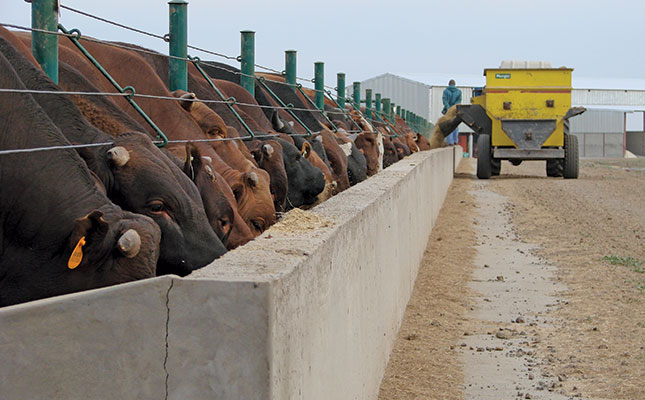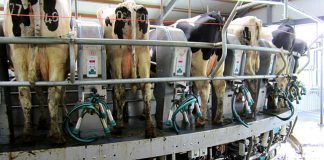
Photo: FW Archive
Homeostasis is the tendency of a body to maintain a stable internal environment in response to changes in external conditions.
On a very hot day, for example, an animal will instinctively seek to maintain stability by keeping in the shade, drinking more water and eating less.
Stress is an external factor that directly affects homeostasis, and can have negative results if prolonged. An animal can suffer stress even during ‘normal’ routine handling, making it more susceptible to disease.
When an animal is stressed, cortisol, a steroid hormone, is released, and this supplies
energy (glucose) for the animal’s ‘fight-or-flight’ response.
This obviously benefits the animal, but frequent stress and the resulting release of cortisol can hamper reproduction and increase susceptibility to diseases due to compromised immunity.
Farmers will often complain, for example, that a particular vaccine is not working efficiently, whereas the animal has a high concentration of circulating cortisol and therefore cannot mount an efficient immune response.
Diseases typically associated with stress are pasteurellosis, Mannheimia haemolytica and coccidiosis. Immunity develops either through vaccination or continuous exposure to non-fatal doses. But stress can lower immunity to such an extent that the animal succumbs to the disease.
Lung infections
M. haemolytica and Pasteurella multocida (pasteurellosis) are lung infections, and an important cause of economic loss in ruminants. They are often encountered in feedlots
and bull testing centres after seasonal changes from a warm to a cold temperature.
Infection occurs especially in young, growing cattle, particularly in calves placed in feedlots after weaning.
M. haemolytica leads to a form of pneumonia, while P. multocida causes a type of broncho-pneumonia. Symptoms include morbidity and anorexia due to fever; coughing; and a nasal discharge. Abnormal lung sounds can be heard through a stethoscope, and the animal’s respiration rate is usually increased due to poor lung function.
Treatment includes antibiotics. The sooner the animal is treated, the better the chances of survival.
Management is of the utmost importance in the control of these diseases, and stress should be limited. As adverse weather conditions cannot be controlled, animals should be vaccinated well in advance of expected stressor periods.
Human-animal interaction, however, can be controlled. Stock workers, for example, should be trained in proper handling procedures.
Coccidiosis
Coccidiosis in cattle is caused by Eimeria parasites and is common in young animals moved from pasture to feedlots. Affected animals usually present with a high morbidity but low fatality rate. Poor production also often occurs in recovering animals.
Symptoms include diarrhoea, with or without blood and mucous; dehydration; emaciation; and malaise.
The disease is transmitted by means of the faecal-oral route, and therefore all animals in the herd need to be treated with coccidiostats (sulphanomides; sulphadimidines; or diclazuril). This is particularly important in unhygienic conditions. Affected animals must also receive additional fluids to prevent dehydration and replace minerals and electrolytes.
Source: Kruger, L. 2014. ‘The effect of environmental factors on stress in cattle’. Newsletter No. 103, ARC Animal Production Institute.










